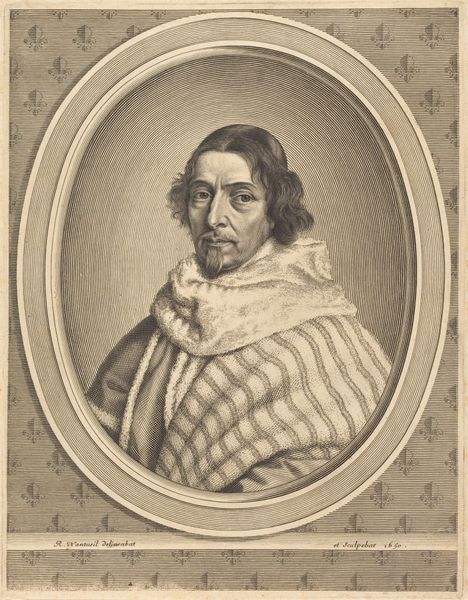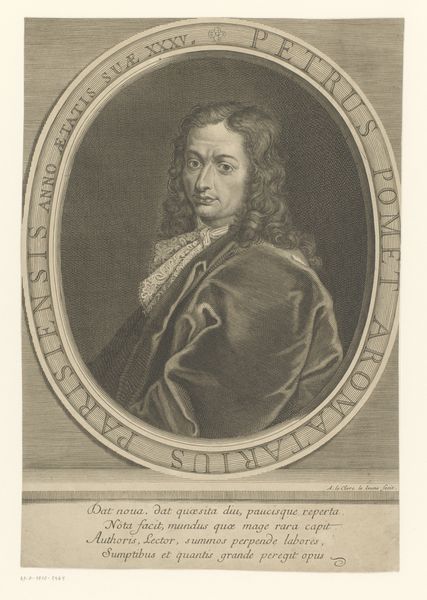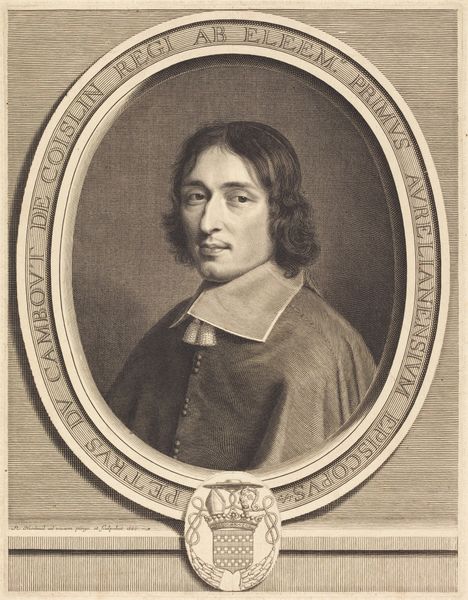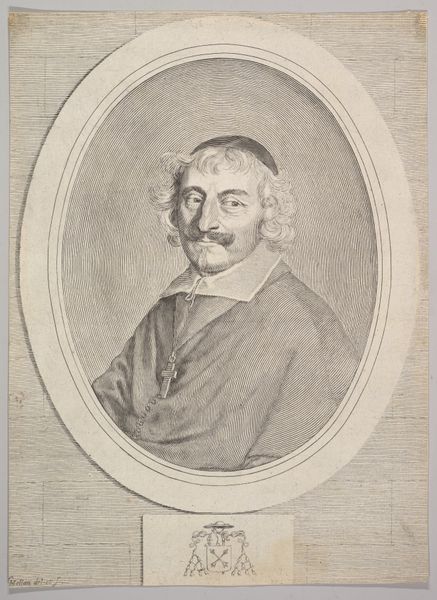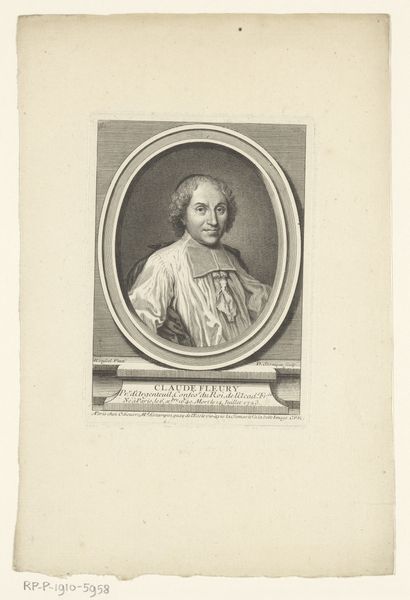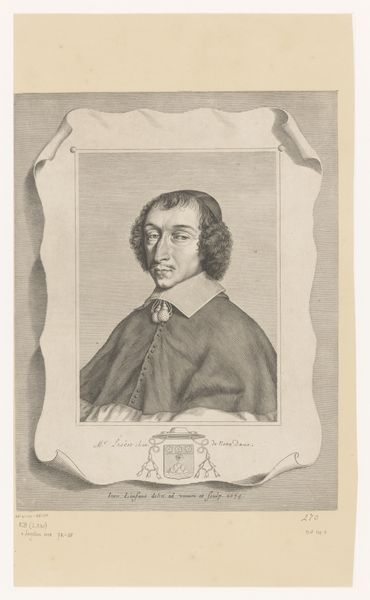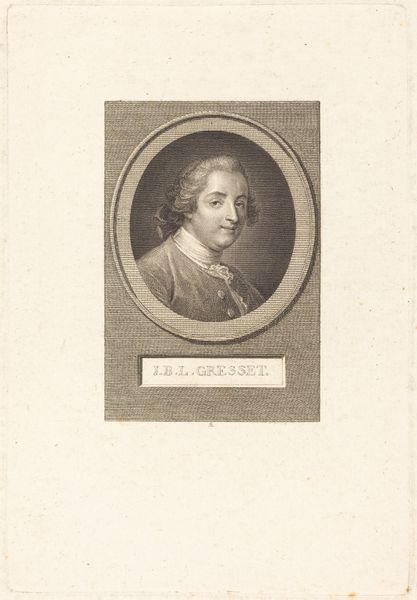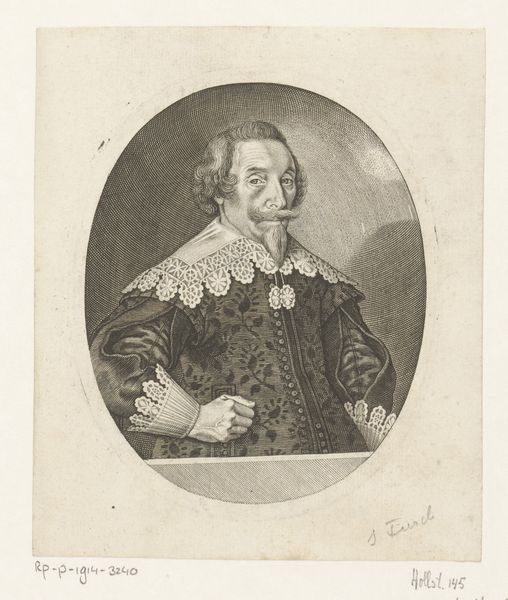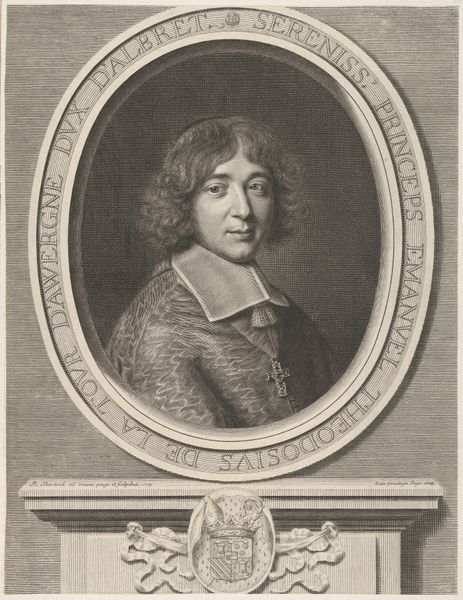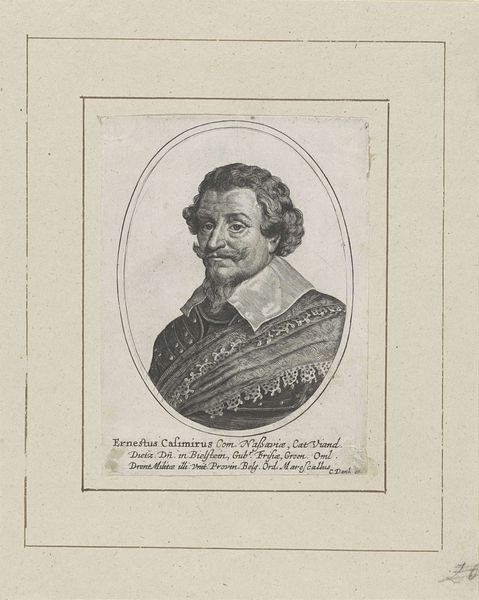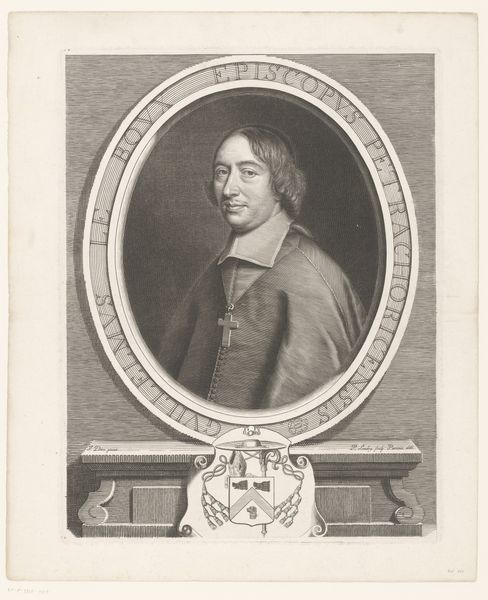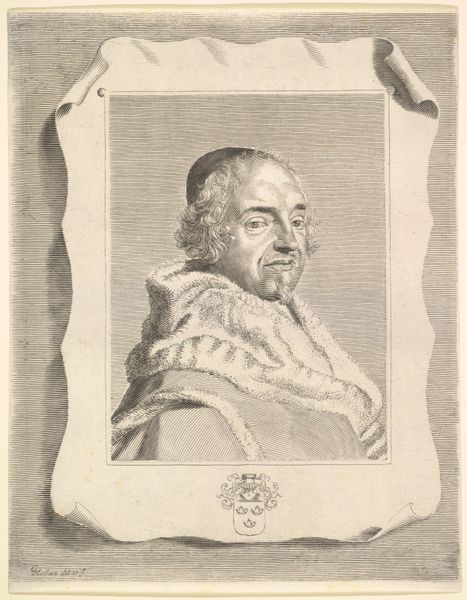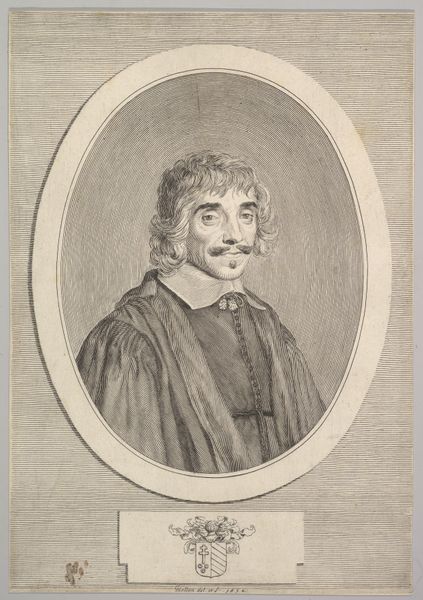
drawing, print, metal, engraving
#
portrait
#
drawing
#
baroque
# print
#
metal
#
men
#
portrait drawing
#
engraving
Dimensions: sheet: 13 9/16 x 9 5/16 in. (34.4 x 23.7 cm)
Copyright: Public Domain
Curator: Look at this compelling portrait, identified as Henri de Mesmes. The piece dates roughly from 1600 to 1650 and is attributed to Claude Mellan. It’s currently held in the collection of the Metropolitan Museum of Art. My immediate impression is one of immense detail, even down to the rendering of textiles and hair using only the technique of engraving. Editor: My eye is drawn immediately to the overall gentleness of the piece, the subject's welcoming demeanor, and of course the oval framing of the portrait. The symbol of the coat-of-arms hints at this man's noble position within society. Can you tell me more about this Claude Mellan, as well as his method to achieve this striking affect? Curator: Mellan was quite well known for a specific engraving technique which he showcased exceptionally in portraits like this one. Rather than varying the thickness of lines as other engravers might, he would vary the proximity between the lines. When closely compacted they created depth in the print and conveyed tone. It looks as if the texture and materiality were a vital aspect for Mellan. Editor: Yes, that creates an atmospheric density! What do we know about Henri de Mesmes, the subject of this work, and could that help us in interpreting the symbols present, or even the general aesthetic? Curator: Henri de Mesmes was a member of the French aristocracy during a turbulent period in France. He was well-educated, from a family of scholars, and occupied influential positions such as "Président à mortier" in the Parliament of Paris. Given his background and place within the courts, the image conveys how this stratum of French society aimed to project an aura of cultivated authority, blending traditional power structures with more refined aesthetics. Editor: That makes so much sense given the symbols that point to the French royal lineage; even Henri’s relaxed pose feels indicative of someone used to wielding power. To me, it’s a reminder that images function not only to document but also to carefully shape our perceptions of power and privilege. Curator: And what stands out is the artistry and craft necessary to convey those ideals through the metal and ink used in this engraving, reflecting the period's own self-image. Editor: Yes, truly revealing! This was an especially revealing look into both the visual language and material implications of 17th-century French portraiture. Curator: Absolutely, an excellent lens for considering the material foundations of symbolic expression.
Comments
No comments
Be the first to comment and join the conversation on the ultimate creative platform.
